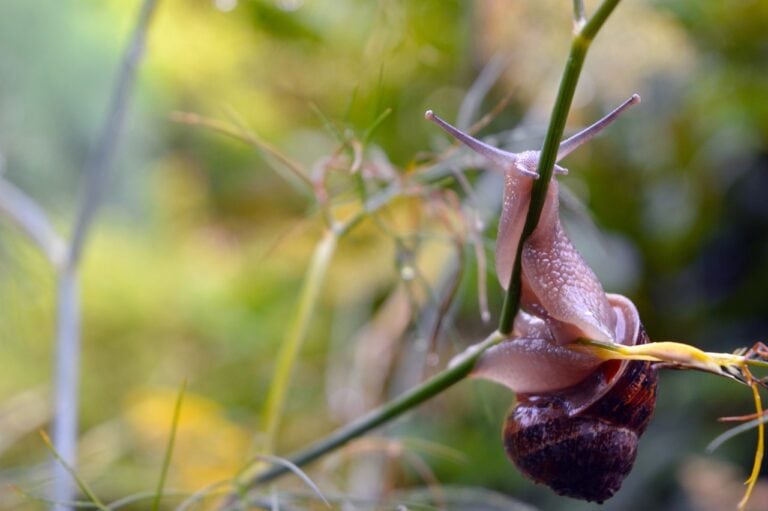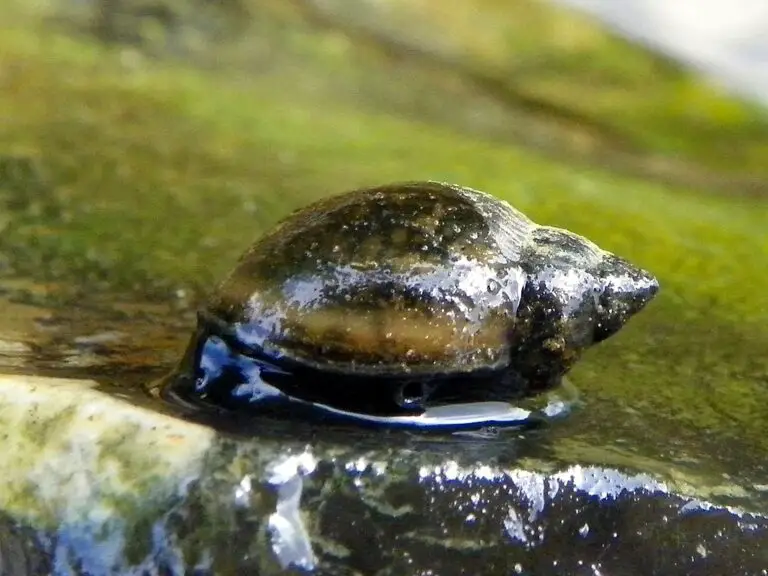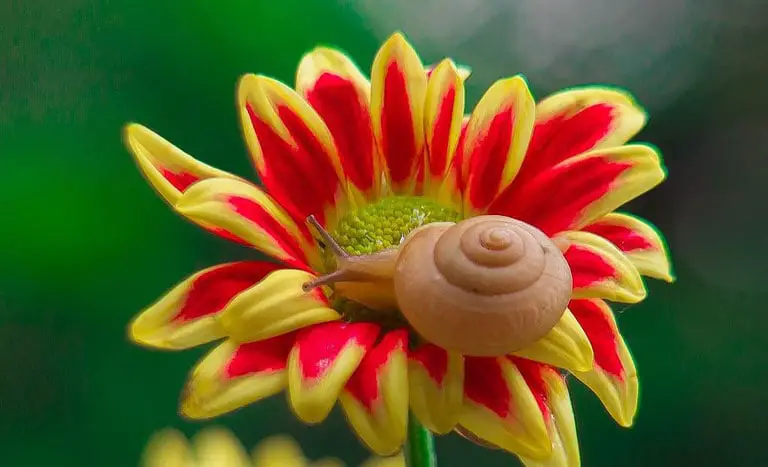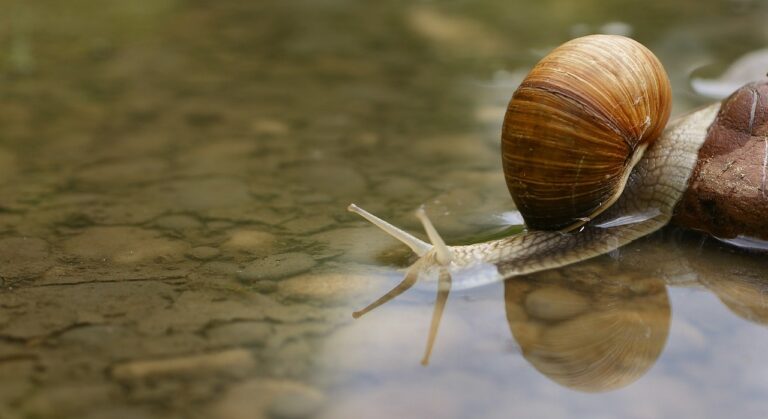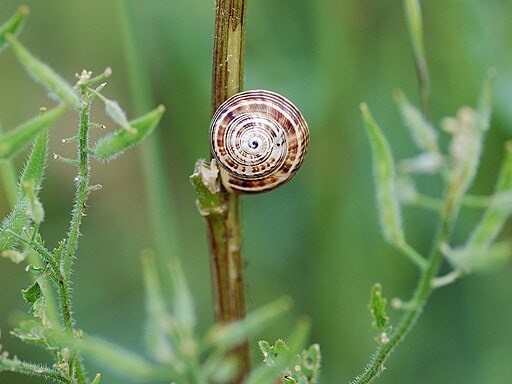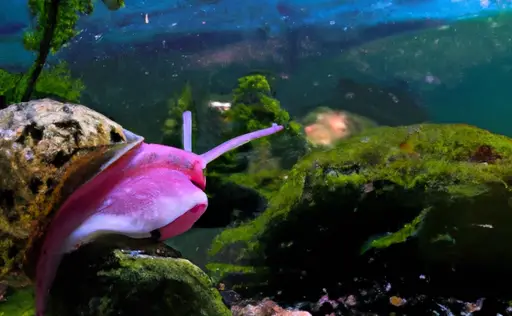How Long Do Snails Live? Discover the Lifespan of Snails.
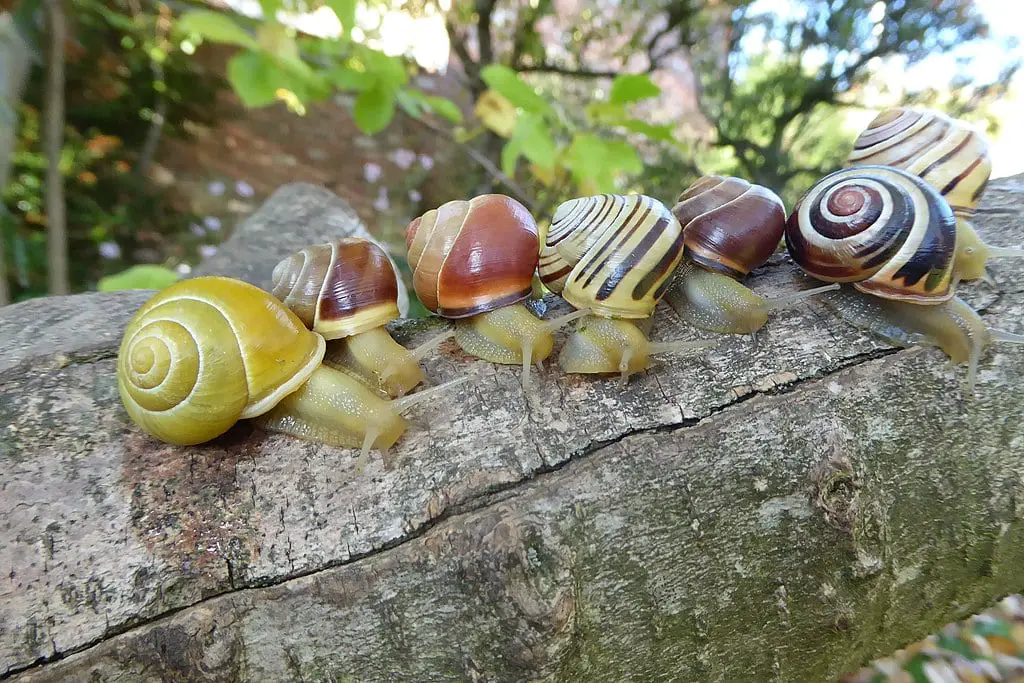
When you spot a snail in your garden, or watch one traverse the side of a flowerpot, have you ever paused to wonder about its journey? How long does a snail live, and what factors can shape its lifespan?
Welcome to our exploration into the remarkable longevity of snails. Here, we’re focusing on all the elements that contribute to a snail’s life — from their fascinating life cycles to their adaptability to different environments, and even the surprising impact of their diet on their life expectancy.
Whether you’re a curious nature enthusiast, a future snail owner, or simply someone intrigued by the mysteries of the natural world, our guide is ready to take you on a slow and steady voyage into the snail’s lifespan.
Are you ready to unravel the journey of these patient, persistent little wanderers? Let’s go!
Understanding the Life Cycle of Snails
A snail’s life cycle is a fascinating process that begins with a tiny egg and progresses through several distinct phases before reaching adulthood. Understanding the life cycle of snails is an important step in learning how to care for these creatures and extend their lifespan.
Stage One: Egg
The first stage of a snail’s life cycle is the egg stage. Depending on the species, snails may lay their eggs underground, in leaf litter, or attached to underwater surfaces for aquatic types.The eggs of most snail species are small, round, and translucent. The gestation period for snail eggs can vary, with some species taking only a few days to hatch and others taking several weeks.
Stage Two: Juvenile
After hatching, the baby snail enters the juvenile stage. At this point, it is very small and fragile, measuring only a few millimeters in length. Juvenile snails are vulnerable to predators and environmental factors, so they tend to hide in vegetation or other sheltered areas. During this stage, snails will begin to develop their characteristic shells, which will continue to grow throughout their lives.
Stage Three: Adolescent
As the juvenile snail grows, it eventually enters the adolescent stage. At this point, it is larger and more robust, capable of moving more quickly and with greater purpose. Adolescent snails are still at risk from predators and environmental factors, but they are better equipped to defend themselves and seek out food and shelter. During the adolescent stage, snails may mate with other snails, or if ther are hermaphroditic and can self-fertilize, to begin the next generation of offspring.
Stage Four: Adult
Finally, the snail reaches adulthood, which is marked by sexual maturity and the ability to reproduce. Adult snails are fully developed, with shells that have reached their maximum size and internal reproductive organs that are fully functional. At this point, snails may continue to reproduce for several years, depending on the species and other environmental factors.
Overall, the life cycle of snails is a remarkable process that spans several distinct stages of growth and development. By understanding the different phases of a snail’s life, you can better appreciate these fascinating creatures and take steps to ensure their health and wellbeing.
Different Types of Snails and Their Lifespans
While all snails share some general characteristics, such as their slimy bodies and ability to retract into their shells, there are many different types of snails species, each with their own unique characteristics and lifespans.
| Snail Species | Average Lifespan | Notable Features |
|---|---|---|
| Garden Snail | 2-3 years | Large, brown shells with light brown stripes; commonly found in gardens and parks |
| Helix Pomatia (Roman Snail) | up to 20 years | Large, yellow-brown shells with dark brown stripes; known for being a delicacy in some European countries |
| Cornu Aspersum (Common Brown Snail) | 3-5 years | Small, brown shells with light brown stripes; commonly used in cooking in France and Italy |
| Achatina Fulica (Giant African Snail) | 5-7 years | Large, light brown shells with dark brown stripes; known for being one of the largest species of land snails |
These are just a few examples of the many different snail species that exist, each with their own unique lifespans and characteristics. It’s important to research the specific needs and requirements of any snail species you plan to keep as a pet, to ensure they receive the proper care to live a long and healthy life.
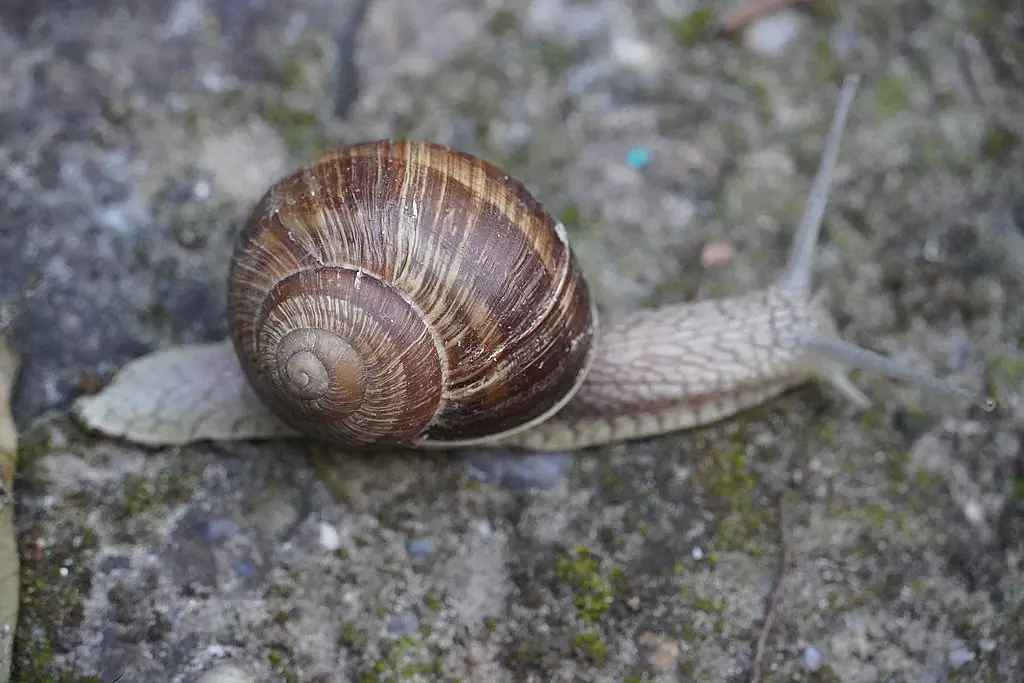
Factors Affecting a Snail’s Lifespan
Just like any other living creature, a snail’s lifespan can be influenced by a variety of factors. While some of these factors are beyond our control, there are some steps we can take as pet owners to ensure our snails have a longer lifespan.
| Factor | Explanation |
|---|---|
| Genetics | Like humans, some snails may be genetically predisposed to having a shorter or longer lifespan. |
| Habitat | The environment where a snail lives can greatly affect its lifespan. Snails that live in an environment that mimics their natural habitat, with the right temperature and humidity levels, may live longer. |
| Diet | A balanced and nutritious diet can help ensure that a snail has all the necessary nutrients to live a long and healthy life. |
| Care | Proper daily care, such as cleaning the snail’s enclosure and providing fresh food and water, can also contribute to a longer lifespan. |
Additionally, while we cannot control external factors such as natural predators or parasites, taking steps to protect our pet snails from these threats can help to prolong their lifespan.
Conclusion
While there are a variety of factors that can impact a snail’s lifespan, pet owners can take steps to ensure their snails are living in the best possible conditions to promote a longer life. By providing a balanced diet, a suitable habitat, and proper care, pet snails have the potential to live a happy and healthy life for several years.
How Does a Snail’s Habitat Affect Its Lifespan?
A snail’s habitat can have a significant impact on its lifespan, with both indoor and outdoor environments having their own pros and cons.
Outdoor snails: Snails living in the wild face numerous challenges and risks to their survival, such as predators, extreme weather conditions, and limited access to food and water. As a result, their lifespan is generally shorter than their indoor counterparts.
| Pros | Cons |
|---|---|
| Unrestricted access to natural sunlight, which promotes healthy shell growth | Exposure to predators, extreme weather, and potential environmental hazards |
| Opportunities for natural foraging and exercise | Limited access to consistent food and water sources |
Indoor snails: Snails kept as pets indoors enjoy a more controlled and safe environment, which can contribute to a longer lifespan. However, it’s important to note that providing the appropriate conditions and care is crucial for their health and longevity.
| Pros | Cons |
|---|---|
| Protection from predators and environmental hazards | Limited exposure to natural sunlight, which can affect shell health |
| Consistent access to food and water | Limited opportunities for natural exercise and exploration |
Overall, the habitat of a snail plays a crucial role in its lifespan and well-being. Whether you choose to keep your snail indoors or outdoors, make sure to provide the appropriate conditions and care to promote a healthy and long life.
Tips to Increase a Snail’s Lifespan
As simple creatures that require relatively little care, snails can live for several years in the right conditions. Here are some tips to help increase your pet snail’s lifespan:
1. Provide a Suitable Environment
Ensure your snail’s habitat is suitable for their species and kept clean and free from any harmful substances. A good rule of thumb is to aim for an environment that closely resembles their natural habitat, with an appropriate temperature, lighting, and humidity level.
2. Offer a Balanced Diet
Feeding your snail a balanced diet is crucial to their overall health and longevity. Snails are herbivores, and they require a variety of fresh fruits and vegetables, calcium-rich foods, and protein sources. Avoid overfeeding and provide fresh food regularly to prevent spoilage.
3. Avoid Chemicals and Toxins
Snails are sensitive to chemicals and toxins, which can have a detrimental effect on their health. Avoid using any pest control products near your snail’s habitat and never use products containing copper, as it can be toxic to snails.
4. Regular Check-ups
Regular check-ups are essential to ensure that your snail is healthy and any potential health issues are addressed promptly. Look out for any signs of illness, such as a lack of appetite, lethargy, or unusual behavior, and seek the advice of a qualified vet if you notice anything amiss.
5. Provide Adequate Moisture
Snails require a moist environment to thrive. Ensure their habitat remains humid by spraying with a fine mist of water regularly, and provide a shallow dish of water for them to drink from.
By following these simple tips, you can help ensure your pet snail lives a happy and healthy life. Remember, snails can live for several years, so providing the right care can make all the difference.
How to Tell the Age of a Snail
Estimating the age of a snail can be a bit tricky as they do not have easily identifiable age markers. However, a few visual cues can give you a rough estimate of how old your snail might be.
Shell Growth
One of the most popular methods of determining a snail’s age is by examining the growth rings on its shell. Much like tree rings, the ridges on a snail’s shell can provide an estimate of its age. Counting the number of ridges or whorls on the shell can give you an approximate idea of how many years the snail has lived, although it’s important to note that growth can be influenced by factors such as nutrition and environment, making this method a rough estimate at best.
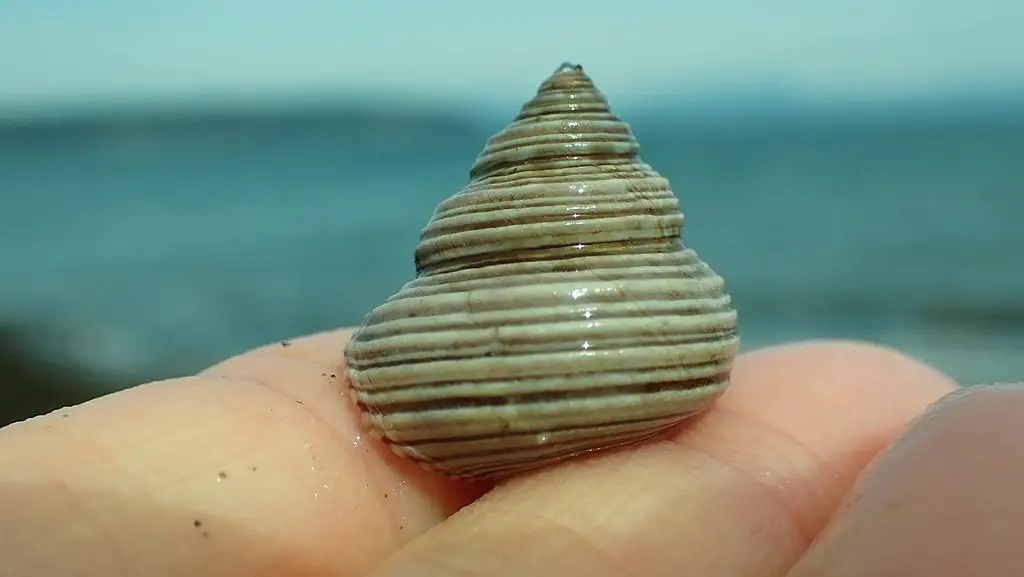
Size
The size of a snail can also give a rough idea of its age. Snails typically grow by about one-third of an inch each year, so the larger the snail, the older it is likely to be. However, the rate of growth can be affected by several factors, such as diet and temperature, so this method is not always accurate.
Physical Characteristics
As snails age, they may develop some physical characteristics that can indicate their age. For instance, older snails tend to have thicker, heavier shells, and their tentacles may appear shorter or more worn down. However, these physical changes can vary greatly between different snail species.
If you are unsure about your snail’s age, it is best to consult with an expert or a veterinarian who specializes in snails.
The Oldest Recorded Snail: A Fascinating Case Study
While snails typically live for a few years, there are rare cases of exceptional longevity. The oldest recorded snail, appropriately named George, lived for over 14 years! This remarkable snail was a common garden snail, or Helix aspersa, and was purchased as an adult by an English schoolboy in 1997.
George quickly became a beloved family pet and was cared for well beyond the average lifespan for his species. In fact, his owner made it a point to keep him safe from predators and provide him with a healthy diet, including fresh greens and fruits. George eventually passed away at the ripe old age of 14 years and 6 months, leaving behind a legacy of remarkable longevity.
George’s case underscores the importance of proper care and attention for pet snails, as even small differences in diet and habitat can have a significant impact on their lifespan. While not all snails are destined to live as long as George, providing them with optimal care can help them thrive and live to their full potential.
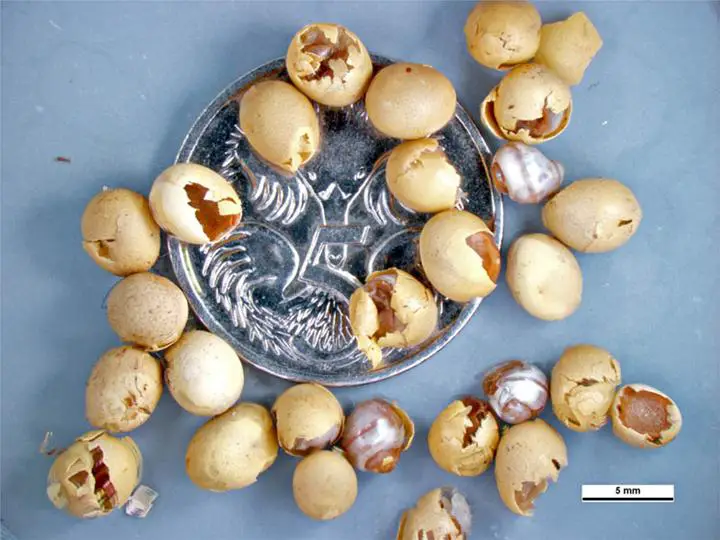
Climate and Lifespan: How Weather Impacts Snails
The climate and weather conditions in which a snail lives can have a significant impact on its lifespan. While snails are adaptable creatures, extreme weather conditions can be detrimental to their health and survival.
Effects of Heat and Drought
Hot and dry weather can be particularly challenging for snails, which require moist environments to survive. When temperatures rise and moisture levels decrease, snails can become dehydrated and struggle to find adequate food sources. This can lead to a decline in health and lower the overall lifespan of the snail.
| Effects of Heat and Drought on Snails | |
|---|---|
| Dehydration | Snails require moist environments to survive. Hot and dry weather can cause dehydration and lead to health problems. |
| Food Source Depletion | When moisture levels decrease, snails may struggle to find adequate food sources. This can lead to malnourishment and health problems. |
| Reduced Activity | Snails may become less active during hot and dry weather, which can lower their overall lifespan. |
Impacts of Cold and Wet Weather
Cold and wet weather can also have negative effects on snails, particularly when temperatures drop below freezing or become excessively damp. In these conditions, snails may become less active and struggle to find food sources, which can impact their overall health and lifespan.
| Impacts of Cold and Wet Weather on Snails | |
|---|---|
| Inactivity | Snails may become less active during cold and wet weather, which can reduce their overall lifespan. |
| Limited Food Sources | When temperatures drop and moisture levels increase, snails may struggle to find adequate food sources, which can lead to malnourishment and health problems. |
| Risk of Freezing | When temperatures drop below freezing, snails can be at risk of freezing to death. |
The Benefits of Moderate Weather Conditions
Overall, moderate weather conditions are best for snail health and longevity. Temperatures between 60-80°F and moderate moisture levels can help snails thrive and live longer lives. Additionally, snails that are kept in controlled indoor environments may enjoy longer lifespans due to the consistent and comfortable climate conditions that they experience.
- Tip: If you keep pet snails, it’s important to monitor the temperature and moisture levels in their habitat to ensure optimal conditions for their health and longevity.
Snail Diet and Lifespan
A snail’s diet can significantly influence its lifespan. By providing a balanced and nutritious diet, you can promote your pet snail’s health and longevity.
So, what exactly should snails eat?
Many species are herbivores, thriving on a variety of fruits, vegetables, and leafy greens. However, it’s important to choose these foods carefully to ensure they’re safe for snail consumption. Here are a few snail-friendly options:
- Lettuce
- Kale
- Cucumber
- Apples
- Carrots
While these foods are generally safe, some fruits and vegetables can be harmful to snails. Avoid foods high in salt or sugar, as well as those that can cause digestive problems, like onions and garlic. Citrus fruits, which are highly acidic, can also be problematic.
Another crucial consideration when feeding your snail is the freshness of the food. Spoiled fruits or vegetables can make your snail ill. It’s also worth mentioning the risk of pesticides: always ensure any fruits or vegetables you offer your snail are organic and thoroughly washed, as pesticide exposure can be harmful to them.
Aside from a balanced diet, snails require plenty of calcium for healthy shell growth. Offer sources of calcium such as crushed eggshells, cuttlefish bones, or specialized snail food with added calcium.
In summary, a carefully selected, balanced diet tailored to your snail’s nutritional needs can help promote a longer, healthier life. As with all pet care, specific dietary requirements can vary among different snail species, so be sure to research the needs of your particular snail type for best results. For a more in depth look at a snail’s diet, check out our post “What Do Snails Eat?“
Pet Snail Lifespan vs Wild Snail Lifespan
Many people enjoy keeping snails as pets, but how does the lifespan of a pet snail compare to that of a wild snail? While the answer may vary depending on a range of factors, including species and care, there are some general differences to consider.
Pet Snail Lifespan
Pet snails can have relatively long lifespans when kept in the right conditions. Depending on the species, some pet snails can live anywhere from 5 to 15 years or more. One factor that can impact a pet snail’s lifespan is the quality of care it receives. Proper housing, diet, and hygiene can all contribute to a longer lifespan for a pet snail.
However, not all pet snails are created equal. Some species may be more delicate or prone to health issues, which can impact their lifespan. It’s important for anyone considering keeping a pet snail to research the specific needs of the species they are interested in and to provide the best possible care.
Wild Snail Lifespan
Wild snails generally have shorter lifespans than their domestic counterparts. The average lifespan for a wild snail is typically around 2 to 3 years. This is due in part to the many challenges that wild snails face in their natural habitat.
Wild snails must contend with predators, disease, and other environmental factors that can take a toll on their health. Additionally, wild snails may not have access to a consistent or nutritious food source. All of these factors can impact the lifespan of a wild snail.
Conclusion
While the lifespan of a pet snail may be longer than that of a wild snail, this is not always the case. Factors such as species, care, and environment can all influence the lifespan of a snail, whether it is kept as a pet or found in the wild. Understanding these factors can help anyone interested in keeping snails to provide the best possible care and ensure a long and healthy life for their pets.
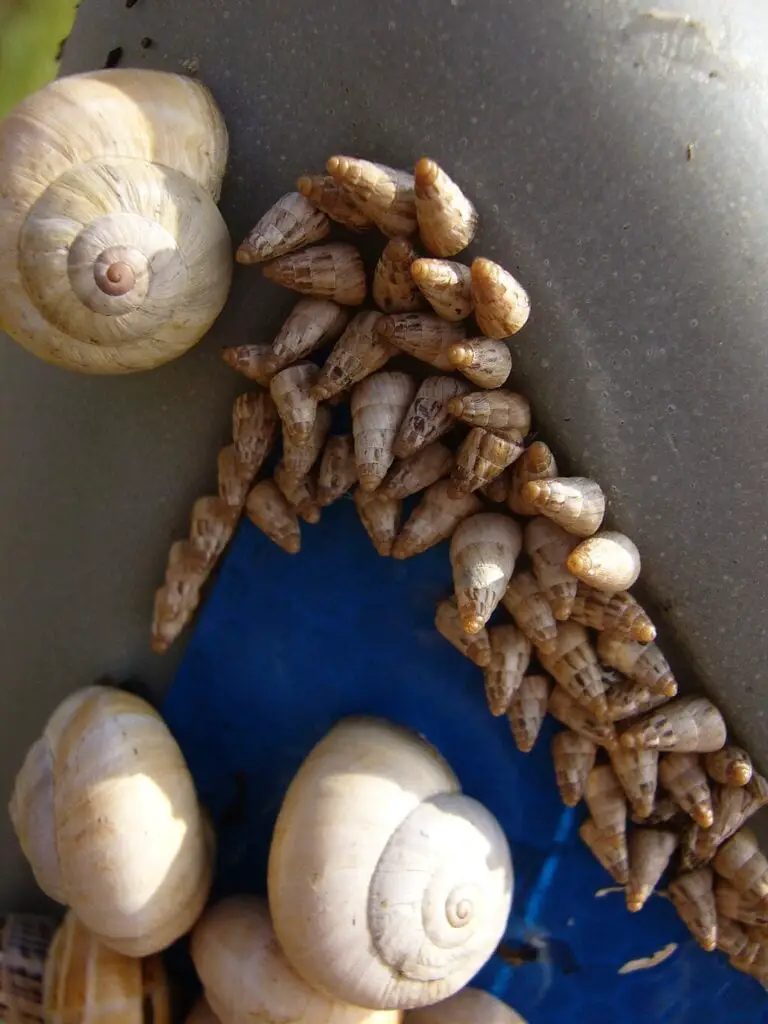
Frequently Asked Questions about Snail Lifespan
How long do snails live?
The lifespan of snails varies depending on the species, with some living only for a few months and others for several years. On average, snails can live for two to three years.
What factors affect a snail’s lifespan?
Various factors can impact a snail’s lifespan, including genetics, habitat, diet, and care. Providing a proper diet, a suitable environment, and regular maintenance can help increase the lifespan of your snail.
Can you tell the age of a snail?
Yes, you can estimate a snail’s age by examining its shell. However, this is a rough estimate at best, as the growth of a snail’s shell can be influenced by various factors, such as its diet and environment. A larger shell generally indicates an older snail, but it’s not a foolproof method.
How can I increase my snail’s lifespan?
You can increase your snail’s lifespan by providing a healthy and balanced diet, maintaining a suitable environment, and keeping up with regular maintenance. Ensure they have access to fresh water and avoid exposing them to harmful chemicals or substances.
What do snails eat?
Snails’ diets vary widely depending on their species. Many terrestrial snails are herbivores and feed on a variety of plant materials, including fruits, vegetables, and leafy greens. Some snails, particularly certain types of marine and freshwater species, may be carnivorous or omnivorous, consuming a diet that includes other invertebrates, algae, or dead plants and animals. For more information, see our post “What Do Snails Eat?“.
Q: How does climate affect a snail’s lifespan?
A: Different climates and weather conditions can impact a snail’s lifespan. Snails are adaptable creatures, but extreme temperatures or weather events can be harmful to their health.
Q: How does a snail’s lifespan differ in the wild versus as a pet?
A: Snails living in the wild may have shorter lifespans due to various environmental factors such as predators, disease, and lack of resources. Pet snails can live longer with proper care and a suitable environment.
Q: Can snails regenerate their shells?
A: Snails can repair minor shell damage, but severe damage or loss of the shell can result in death. Check out our post on snail’s shells to find out more.
Reflections on the Snail’s Journey
With everything we’ve learned, it’s clear that the life of a snail is far more fascinating than it might appear at first glance. From their varied lifespan to their surprising adaptability, each element contributes to their unique journey in the world.
Whether in our gardens, in the wild, or in our homes as pets, snails are impressive creatures in their own slow, steady way. By understanding more about their life cycle, diet, and habitat, we can better appreciate their role in the ecosystem and possibly take better care of our little mollusk friends.
No matter what drew you to learn more about snails, we hope you’ve enjoyed this in-depth exploration of their lives. It’s a slow-paced world out there in the undergrowth, but for the snails, it’s full of adventures waiting to unfold.
Thank you for joining us on this exploration. Until the next journey!

